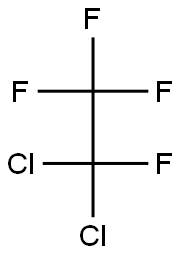General Description
Colorless gas with a faint, ether-like odor at high concentrations. Boiling point 38°F. Shipped as a liquefied compressed gas.
Reactivity Profile
dichlorotetrafluoroethane is incompatible with the following: Chemically-active metals such as sodium, potassium, calcium, powdered aluminum, zinc & magnesium; acids; acid fumes .
Health Hazard
Vapors may cause dizziness or asphyxiation without warning. Vapors from liquefied gas are initially heavier than air and spread along ground. Contact with gas or liquefied gas may cause burns, severe injury and/or frostbite. Fire may produce irritating, corrosive and/or toxic gases.
Fire Hazard
Some may burn but none ignite readily. Containers may explode when heated. Ruptured cylinders may rocket.
Potential Exposure
This material is used as a refrigerant
and also as a propellant gas
First aid
If this chemical gets into the eyes, remove any
contact lenses at once and irrigate immediately for at least
15 minutes, occasionally lifting upper and lower lids. Seek
medical attention immediately. If this chemical contacts the
skin, remove contaminated clothing and wash immediately
with soap and water. Seek medical attention immediately.
If this chemical has been inhaled, remove from exposure,
begin rescue breathing (using universal precautions, including resuscitation mask) if breathing has stopped and CPR if
heart action has stopped. Transfer promptly to a medical
facility. When this chemical has been swallowed, get medical attention. Give large quantities of water and induce
vomiting. Do not make an unconscious person vomit. If
frostbite has occurred, seek medical attention immediately;
do NOT rub the affected areas or flush them with water.
In order to prevent further tissue damage, do NOT attempt
to remove frozen clothing from frostbitten areas. If frostbite
has NOT occurred, immediately and thoroughly wash
contaminated skin with soap and water.
Shipping
UN1958. 1,2-Dichloro-1,1,2,2-tetrafluoroethane
or Refrigerant gas R-114, Hazard Class: 2.2; Labels: 2.2-
Nonflammable compressed gas. Cylinders must be transported in a secure upright position, in a well-ventilated
truck. Protect cylinder and labels from physical damage.
The owner of the compressed gas cylinder is the only entity
allowed by federal law (49CFR) to transport and refill
them. It is a violation of transportation regulations to refill
compressed gas cylinders without the express written permission of the owner
Incompatibilities
Keep away from welding and hot
metals; decomposes, forming hydrogen chloride and
hydrogen fluoride. Reacts with acids and acid fumes forming highly toxic chloride gases. Keep away from chemically active metals: sodium, potassium, calcium,
powdered aluminum; zinc, and magnesium. Attacks some
plastics and coatings.
Waste Disposal
Return refillable compressed
gas cylinders to supplier. Incineration after mixing with
combustible fuel. Use flue gas scrubber.

